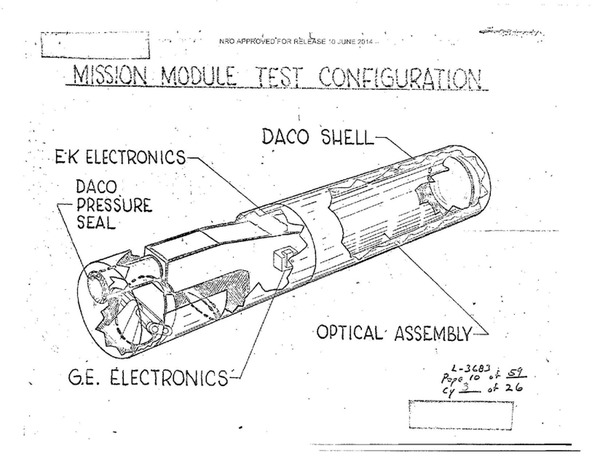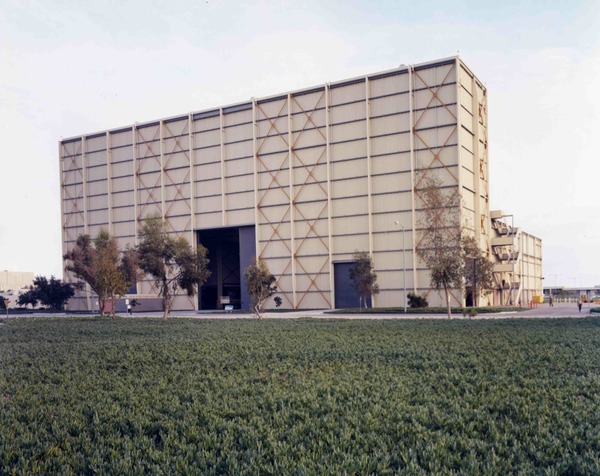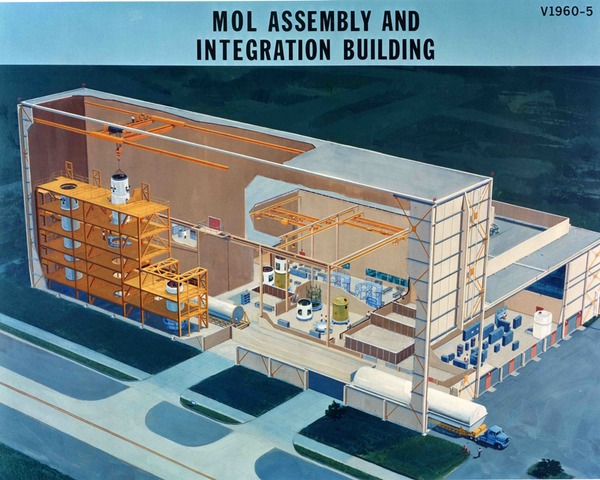MOL’s mysteriesby Dwayne A. Day
|
| When MOL was cancelled in summer 1969, it was a major financial blow to McDonnell Douglas. |
Nevertheless, many MOL questions remain unanswered and will have to await further document declassifications or former MOL personnel discussing the program and their role in it. For example, what contractors were involved in the development of MOL and what were their roles? How did they work together, especially when some parts of the project were unclassified and some were deep black.
Because MOL was an unusual program with both unclassified and classified elements, many details about it were released while it was under development, although this conveniently helped to distort the image of what MOL was actually for. Based upon the unclassified parts alone, it is clear that MOL was a large and expensive project. In 1967, the Air Force awarded fixed-price incentive-fee contracts to Douglas Aircraft for $674.7 million and McDonnell for over $180 million. Douglas was responsible for the laboratory module’s unpressurized and pressurized sections and McDonnell for the Gemini B spacecraft. Other sources indicate that McDonnell was supposed to provide four Gemini B spacecraft with options for two or more later. Douglas signed subcontracts for such components as the waste management system, attitude control, and life support. When Douglas and McDonnell merged later that year, the combined company was responsible for a very large Department of Defense space contract. Thus, when MOL was cancelled in summer 1969 it was a major financial blow to McDonnell Douglas.
General Electric also received a contract for $110 million for “experiment integration work,” which included aspects of the highly classified KH-10 DORIAN optics system. Eastman Kodak, which had manufactured both the GAMBIT-1 (KH-7) and GAMBIT-3 (KH-8) camera systems, also was contracted to build the similar but much larger KH-10 system, although we still do not know how much the company was paid for this work. For other robotic reconnaissance programs, however, the camera system was the largest expense (the KH-9 camera system accounted for over half of the program’s total budget), so the KH-10 would not have been cheap.
 This declassified drawing shows some of the major contractors for the MOL spacecraft. |
One newly declassified illustration indicates that both General Electric and Eastman Kodak built electronics for controlling the camera system. GE’s work was apparently associated with controlling the large rotating, image reflecting mirror for the KH-10 DORIAN camera system. This mirror enabled the camera to take a photograph of the ground from one angle, and then as the spacecraft traveled over it, the mirror could rotate to a new position and enable the camera to view the ground target from another angle. This stereo photography made it possible to take accurate measurements of objects on the ground.
Eastman Kodak also appears to have been involved in developing electronics for the various smaller mirrors that bounced light along a path into the pressurized spacecraft and onto the platen where the film was exposed. Just what adjustment these mirrors required is unclear, but in addition to focusing and the ability to compensate for the motion of the spacecraft over the ground, this could have included the insertion of filters to improve image quality.
| Did all of that MOL hardware get crushed and smelted, or might there be a nearly-complete Gemini B spacecraft sitting in a warehouse somewhere, next to a crate containing the Ark of the Covenant? |
In addition to this work on the complicated spacecraft, the Air Force had also issued contracts for the purchase of additional land at Vandenberg Air Force Base and the construction of a new launch facility, Space Launch Complex 6 (or “Slick-6,” as it was later designated). That was the largest single construction effort ever undertaken at Vandenberg up to that time. The Air Force also contracted for the development of the Titan IIIM launch vehicle.
Major structural components for the MOL spacecraft were manufactured by Douglas Aircraft Company at a large new building constructed in Huntington Beach. Cutaway and flow charts indicate how various MOL components would have been brought together and integrated prior to shipping up to the launch site at Vandenberg. But what remains unknown is how the large and complex optical system, largely built at Kodak’s Rochester, New York facility, would have been integrated into the pieces manufactured in Huntington. There are photos of MOL equipment being loaded onto a cargo aircraft, and it seems likely that after the Huntington plant built the unpressurized module, it was flown to Rochester for the installation of the optics system, then flown back to Huntington for additional integration work.
There are also remaining questions about the final configuration of the first spacecraft scheduled for flight as well as future planning. Some illustrations show MOL equipped with a small reentry vehicle that would have been packed with film by the astronauts and sent to Earth for recovery. The Soviet Almaz program used a similar technique. However, another illustration indicates that the only way for MOL to return physical data (i.e. film) to Earth was in the Gemini spacecraft. This would have limited how much could be brought back—Gemini was already cramped—and also meant that the film would only come back at the end of the mission, which was nominally planned to last 30 days. Thus MOL would have been a lot of expense for a long wait for film to reach intelligence analysts on the ground.
 MOL construction facility in Huntington Beach, California. When MOL was canceled, many people lost their jobs, contributing to a growing unemployment problem in the California aerospace industry. (credit: D. Day) |
In addition, many of the newly-released documents show various alternative and upgrade options for MOL, including leaving the spacecraft in orbit for future visits by astronauts and even connecting two or more laboratory modules together. NASA historical files include briefing charts on possible MOL-derived scientific and astronomy laboratories. These were almost certainly only contractor proposals demonstrating what they could do with MOL in the future, but did the Air Force and the National Reconnaissance Office ever take any of them seriously? And finally, how much MOL hardware existed when the program was canceled in 1969 and what happened to it? Were any Gemini B spacecraft substantially completed? The first unpressurized laboratory section for MOL was finished by Douglas in March 1968, but cancellation occurred almost a year and a half later, allowing plenty of time for integration work. Did all of that MOL hardware get crushed and smelted, or might there be a nearly-complete Gemini B spacecraft sitting in a warehouse somewhere, next to a crate containing the Ark of the Covenant? Those and many other questions remain about the largest manned military space program ever developed in the United States.
